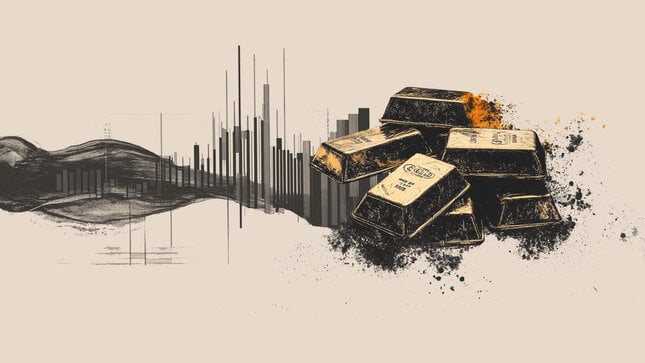In today’s unpredictable financial environment, defined by the speed of information, the scale of leverage, and the complexity of global interconnections, the nature of risk has evolved dramatically.
Market shocks now emerge not only from macroeconomic cycles or central bank policies, but from an increasingly wide array of sources: Geopolitical tensions, algorithmic flash crashes, liquidity evaporation, supply chain disruptions, and even social media-fueled investor sentiment.
Traditional risk management frameworks, rooted in historical correlations, backward-looking models, and human-in-the-loop decision-making, are struggling to keep pace. While these systems have served as the foundation of institutional oversight for decades, they often suffer from critical limitations:
-
They react after the fact, rather than anticipate emerging threats
-
They assume linearity and normal distributions in markets that are increasingly chaotic and nonlinear
-
They are slow to adapt, relying on infrequent recalibration, limited data inputs, and manual oversight
In this new era of high-frequency volatility and interconnected risk, a paradigm shift is not just desirable. It is essential.
Artificial Intelligence (AI) is a technological force capable of transforming risk management from a passive, compliance-driven function into a real-time, strategic capability. AI brings an entirely new dimension to the discipline by enabling systems to:
-
Ingest and interpret vast volumes of structured and unstructured data from multiple sources simultaneously
-
Detect early anomalies and weak signals that precede major disruptions
-
Forecast not only the probability of risk events but their propagation paths across markets and instruments
-
Respond autonomously by adjusting exposures, rebalancing allocations, or triggering hedges with precision and speed
This transformation is not simply about automation; it’s about intelligence at scale. AI enables risk systems to become anticipatory rather than reactive, adaptive rather than static, and continuous rather than periodic.
The key strategic question facing institutional investors, asset managers, and trading firms is no longer whether AI should be embedded into the risk function. That debate is over.
The real challenge now is how effectively AI can be operationalized to detect, mitigate, and ultimately prevent the next trading meltdown, before it unfolds.
Because in modern markets, risk does not give a warning, it gives a window. And only intelligent systems can see it open in time.
From reactive models to proactive intelligence
For decades, financial institutions have relied on a set of foundational risk management models designed to quantify and contain uncertainty. These include:
-
Value at Risk (VaR) estimating the potential loss in portfolio value over a defined period with a given confidence level.
-
Stress testing simulating portfolio behavior under extreme but plausible scenarios.
-
Beta and correlation coefficients measuring sensitivity to market movements and relationships between assets.
-
Scenario analysis projecting outcomes based on historical events or expert-driven hypotheses.
While these methods remain essential components of a risk manager’s toolkit, they share a fundamental shortcoming: They are inherently reactive. Rooted in historical data and statistical assumptions, they operate on the belief that future market dynamics will echo past behavior.
However, modern markets are shaped by new risk vectors that deviate sharply from historical precedent:
-
Geopolitical ruptures such as Russia’s invasion of Ukraine or U.S.-China trade tensions.
-
Technological shocks including algorithmic flash crashes and infrastructure failures.
-
Liquidity fragmentation in decentralized markets and alternative trading venues.
-
Regulatory volatility, where sudden policy shifts (e.g., Basel III, DORA, MiCA) create immediate, systemic impact.
In this complex environment, where the next crisis is unlikely to resemble the last, relying solely on backward-looking models leaves institutions exposed.
Artificial Intelligence, particularly through machine learning (ML), deep learning, and probabilistic modeling, has introduced a decisive shift in capability. AI transforms risk management by moving beyond historical assumptions to embrace real-time intelligence and predictive adaptability.
AI-enabled systems can:
-
Ingest vast amounts of unstructured data, including news headlines, regulatory filings, macroeconomic indicators, social media sentiment, satellite data, and supply chain signals
-
Monitor and interpret nonlinear relationships between risk factors that are invisible to traditional models
-
Continuously evaluate changes in behavior across markets, asset classes, and investor sentiment, identifying signals that precede volatility or disruption
-
Trigger risk responses such as rebalancing portfolios, adjusting hedges, reducing leverage, or reallocating liquidity, often before a human team detects the risk
Unlike static models that are updated periodically, AI models learn and adapt continuously. They recalibrate not just based on historical inputs but on evolving market realities.
Case in point
During the early days of the COVID-19 outbreak in January 2020, before lockdowns or market sell-offs, AI-enhanced hedge funds began picking up weak signals:
-
Spikes in sentiment volatility across Chinese social media.
-
Anomalies in flight cancellation patterns and port activity in East Asia.
-
Increased keyword clustering in earnings calls around supply chain disruption and pandemic risk.
These signals, processed by AI models trained on alternative data, prompted early exposure reductions in Asian equities, airlines, and global travel stocks, days or even weeks before traditional funds reacted. While human risk teams were still evaluating WHO announcements, AI systems were already reallocating capital.
This example underscores the central thesis: AI doesn’t just respond to risk. It anticipates it.
And in a world where milliseconds matter, being early isn’t an advantage. It’s a necessity.
CFDs are complex instruments and come with a high risk of losing money rapidly due to leverage. You should consider whether you understand how CFDs work and whether you can afford to take the high risk of losing your money. The Article/Information available on this website is for informational purposes only, you should not construe any such information or other material as investment advice or any other research recommendation. Nothing contained on this Article/ Information in this website constitutes a solicitation, recommendation, endorsement, or offer by LegacyFX and A.N. ALLNEW INVESTMENTS LIMITED in Cyprus or any affiliate Company, XE PRIME VENTURES LTD in Cayman Islands, AN All New Investments BY LLC in Belarus and AN All New Investments (VA) Ltd in Vanuatu to buy or sell any securities or other financial instruments in this or in in any other jurisdiction in which such solicitation or offer would be unlawful under the securities laws of such jurisdiction. LegacyFX and A.N. ALLNEW INVESTMENTS LIMITED in Cyprus or any affiliate Company, XE PRIME VENTURES LTD in Cayman Islands, AN All New Investments BY LLC in Belarus and AN All New Investments (VA) Ltd in Vanuatu are not liable for any possible claim for damages arising from any decision you make based on information or other Content made available to you through the website, but investors themselves assume the sole responsibility of evaluating the merits and risks associated with the use of any information or other Article/ Information on the website before making any decisions based on such information or other Article.
Editors’ Picks

Gold refreshes record highs, eyes $4,400 amid renewed geopolitical tensions
Gold is closing in on $4,400 early Monday, renewing lifetime highs, helped by renewed geopolitical tensions. Israel-Iran conflict and US-Venezuela headlines drive investors toward the traditional store of value, Gold.

AUD/USD grinds higher above 0.6600 after PBOC's status quo
AUD/USD is grinding higher above 0.6600 in Monday's Asian trading. The pair cheers an upbeat market mood and a hawkish RBA monetary policy outlook for 2026. The PBOC's no rate change decision seems to have little impact on the pair as a holiday-shortened week kicks in.

USD/JPY drops below 157.50 as Yen recovers BoJ-led losses
USD/JPY loses ground and drops below 157.50 in the Asian session on Monday. The Japanese Yen recovers the BoJ's expected rate hike decision-led losses amid a minor US Dollar uptick and a risk-on market mood.

Week ahead: Key risks to watch in last days of 2025 and early 2026
The festive period officially starts next week, with many traders vacating their desks until the first full week of January, making way for thin trading volumes and very few top-tier releases.

De-dollarisation by design: Gold’s partner in the new system
You don’t need another 2008 for the system to reset. You just need enough nations to stop settling trade in dollars. And that’s already happening. "If gold is the anchor, what actually moves value in a post-dollar world?” It’s a question most gold investors overlook. We think in terms of storage and preservation, but in the new rails being built, settlement speed matters just as much as soundness of money.
RECOMMENDED LESSONS
Making money in forex is easy if you know how the bankers trade!
I’m often mystified in my educational forex articles why so many traders struggle to make consistent money out of forex trading. The answer has more to do with what they don’t know than what they do know. After working in investment banks for 20 years many of which were as a Chief trader its second knowledge how to extract cash out of the market.
5 Forex News Events You Need To Know
In the fast moving world of currency markets where huge moves can seemingly come from nowhere, it is extremely important for new traders to learn about the various economic indicators and forex news events and releases that shape the markets. Indeed, quickly getting a handle on which data to look out for, what it means, and how to trade it can see new traders quickly become far more profitable and sets up the road to long term success.
Top 10 Chart Patterns Every Trader Should Know
Chart patterns are one of the most effective trading tools for a trader. They are pure price-action, and form on the basis of underlying buying and selling pressure. Chart patterns have a proven track-record, and traders use them to identify continuation or reversal signals, to open positions and identify price targets.
7 Ways to Avoid Forex Scams
The forex industry is recently seeing more and more scams. Here are 7 ways to avoid losing your money in such scams: Forex scams are becoming frequent. Michael Greenberg reports on luxurious expenses, including a submarine bought from the money taken from forex traders. Here’s another report of a forex fraud. So, how can we avoid falling in such forex scams?
What Are the 10 Fatal Mistakes Traders Make
Trading is exciting. Trading is hard. Trading is extremely hard. Some say that it takes more than 10,000 hours to master. Others believe that trading is the way to quick riches. They might be both wrong. What is important to know that no matter how experienced you are, mistakes will be part of the trading process.
The challenge: Timing the market and trader psychology
Successful trading often comes down to timing – entering and exiting trades at the right moments. Yet timing the market is notoriously difficult, largely because human psychology can derail even the best plans. Two powerful emotions in particular – fear and greed – tend to drive trading decisions off course.

